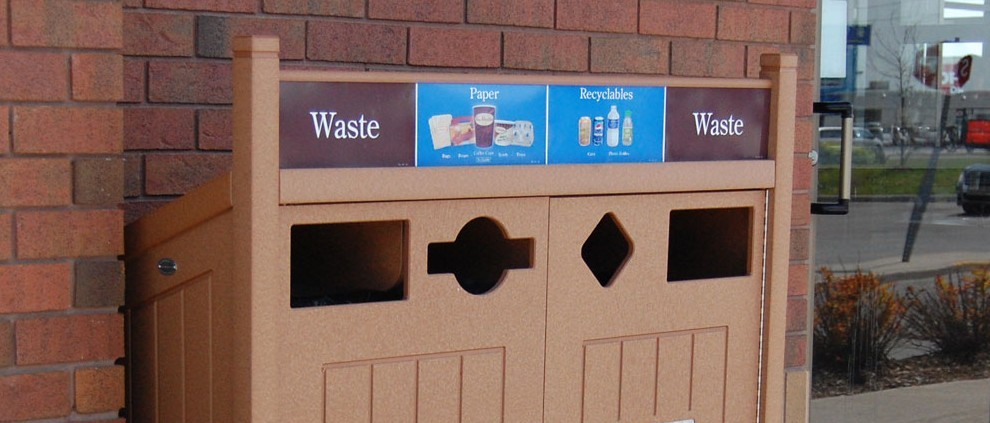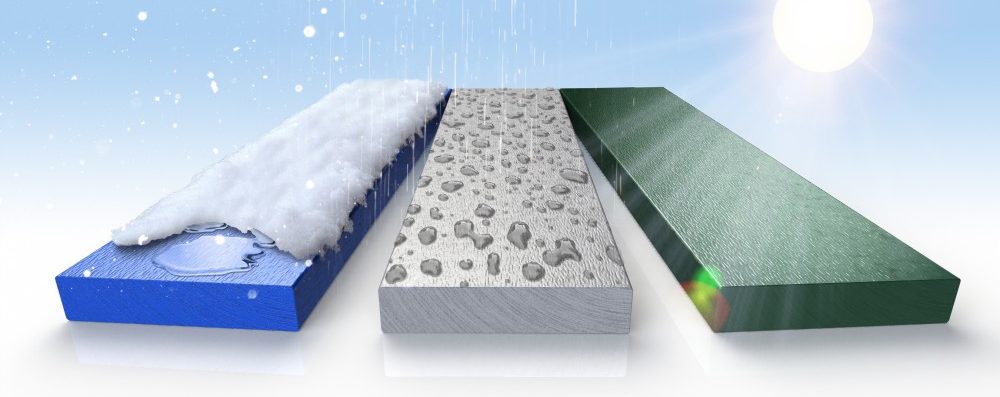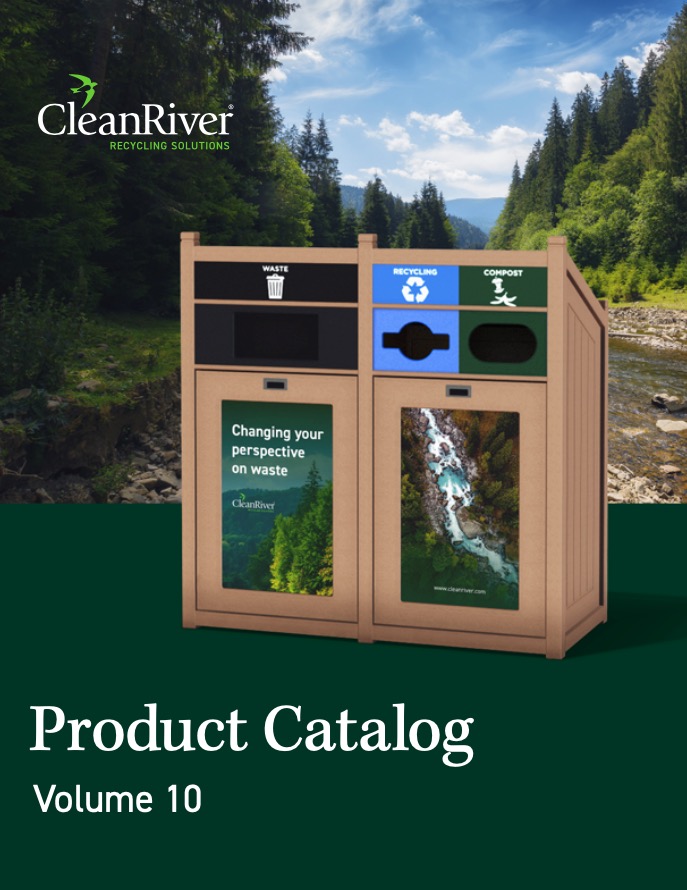Share
1. Capacity – conduct a waste audit to determine the volume and type of waste typically generated in your facility. For example, in hallways you typically need a narrow container and for specific outdoor locations like drive-thrus the containers are constrained to the size of the concrete pads they sit on. Once you know how much waste you need to collect and the desired footprint of the bin you get a much clearer understanding of the capacity requirements for your containers.
2. Determine your waste hauler’s collection requirements – some waste haulers require your recyclables to be separated and some collect single stream recycling. This is where all recyclables are collected together for example newspapers and cans and bottles are all in one bin. When you know what you can collect you can determine the openings and graphics you will need on your container and how many compartments you’ll need.

3. Customized collection – determine if you have unique collection requirements for your recyclables such as sharp edges, fragility, liquids or high market value. If placing bins in parks and public spaces you may also have the threat of rodents, pests or insects to consider. Your bin supplier will be able to design a bin that meets your specific collection requirements.
4. Clear informative graphics – help people make the right choice when tossing their waste into a recycling bin. People have about 2-3 seconds as they approach a recycling bin to make a decision on how to sort their waste into recycling or garbage. Simple graphics with product specific images empower people to make the right choice and reduces the amount of trash in your recycling collection.

5. One-stop collection helps increase the effective separation of recycling and landfill garbage. The issue with having separate waste and recycling containers is that they can become physically separated, for example, during facility cleaning. When they’re separated people don’t have the choice of where to dispose their garbage, so they often just toss it into the closest bin. This causes contamination in your recycling and waste streams, which is detrimental to your sustainability goals because contaminated recycling will often end up in the landfill rather than properly sorted at the Material Recovery Facilities.
6. Ease of servicing – it’s critical to include custodial feedback when designing a recycling program. It provides insight on what they need to help them do their job more effectively. Common custodial concerns include difficulty in lifting full garbage bags out of the bins, people leaving garbage on top of or next to bins, large items being stuffed in the bin and blocking the openings, and people not recycling their waste they are just tossing it all in the landfill collection.

Little Rock Zoo, Arkansas, consulted with their custodial team to discover their key frustrations. This feedback helped CleanRiver design a custom bin that made servicing quicker and easier, and helped visitors recycle 65% more waste. Read the case study on Little Rock Zoo’s Recycling Program.
7. Sturdy construction – you want recycling bins to last for many years so look for containers that are manufactured to withstand all weather conditions and high-traffic usage. There are different material options available including various wood laminates, steel and plastic. A popular choice when looking to complement sustainability programs is recycled HDPE because it’s made from recycled plastic. The benefits of recycled HDPE is that it’s waterproof, doesn’t rot and is impervious to insects. CleanRiver also accepts recycled HDPE bins at end of life to be recycled into consumer items and HDPE lumber.

8. Customized colors – personalize your program by using your brand colors and logo on your recycling containers. It helps communicate to your employees and customers that you take your recycling program seriously.

9. Future-Ready capability – recycling programs change over time so protect your investment by buying bins that will adapt to changing collection requirements. For example organic collection is gaining momentum in North America, Metro Vancouver mandated organic collection for all residential and commercial properties in January 2015. With CleanRiver Transition® containers it is easy to add organic collection to an existing container, or change up your recycling collection to separate out white paper.
[video_wrap][/video_wrap]
10. Partnership – an important consideration when buying new recycling bins is to work with a partner that’s going to give you full program support after you’ve received your bins. A manufacturer with the experience to advise you when you meet bumps in the road on your recycling program journey. For example tips on how to increase user participation in the program, what to do if your municipality introduces changes to recycling mandates and who is able to advise on how to positively impact your facility culture to embrace the new recycling program.
To learn how CleanRiver will provide you with a customized recycling solution that helps you divert waste from landfill contact us at 1-888-628-5756 or email solutions@cleanriver.com.
The CleanRiver Book of Recycling Graphics |
|---|

